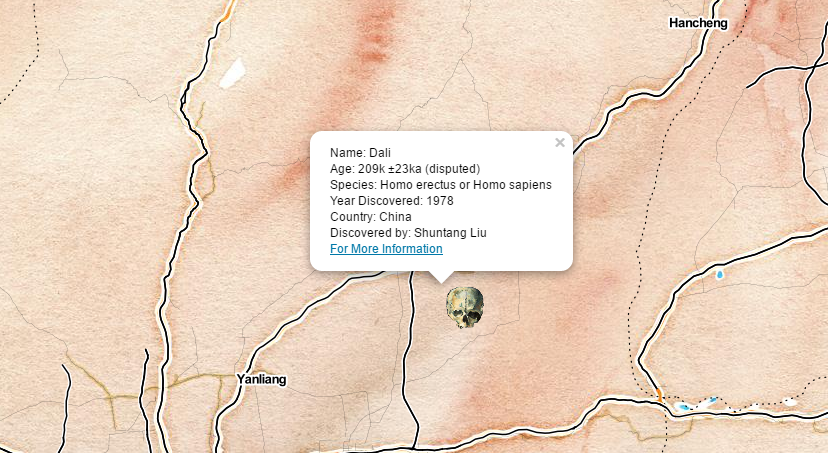
For more information, click here. Or, Try these sources:
- Xiao, J.L.; Jin, C.; Zhu, Y. (2002). "Age of the Fossil Dali Man in North-Central China deduced from Chronostratigraphy of the Loess-paleosol Sequence". Quaternary Science Reviews. 21 (20): 2191–2198. doi:10.1016/s0277-3791(02)00011-2. Can be read here.
The Dali Skull, or Dali Man, is a nearly complete fossilized skull, probably representing an early form of Archaic Homo sapiens which lived in the Late Middle Pleistocene period. It was discovered by Shuntang Liu in 1978 in Dali County in the Shaanxi Province of China. The dating of the skull has been a subject of debate. Uranium-series dating of ox teeth from the site obtained a date of 209,000 ±23,000 years, however, the nature of the association between the hominid cranium and the ox teeth remains uncertain. The fossil is considered to be the most complete skull of that time period found in China.
- Wu X. (1981): A well-preserved cranium of an archaic type of early Homo sapiens from Dali, China. Scientia Sinica no 24: pp 530-539.
- Wu, X (1988). "Comparative study of early Homo sapiens from China and Europe". Acta Anthropologica Sinica. 7: 292–299.